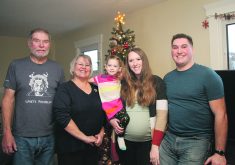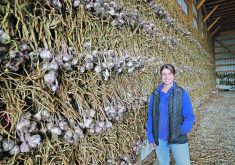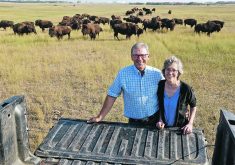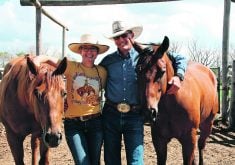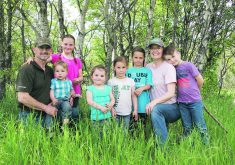Fruit, vegetable sector also hit | The drought in southwestern Ontario has caused hundreds of millions in losses
DOUGLAS, Ont. — Driving through eastern Ontario’s Renfrew County to Mike Donohue’s farm, it is difficult to imagine this is ground zero for Ontario’s worst drought in decades.
Fields are green after several days of rain showers and the landscape looks normal, except for the fields dotted with round bales that should be plentiful but this year are few and far between.
Donohue said the green fields are a bit of an August mirage.
“It’s like the rain came mixed with green paint,” he said. “Brown fields turned green, but there are no roots and still no pasture.”
Read Also

Beef check-off collection system aligns across the country
A single and aligned check-off collection system based on where producers live makes the system equal said Chad Ross, Saskatchewan Cattle Association chair.
Although the Ontario drought has been regional rather than general, farm leaders and provincial government officials are predicting losses of hundreds of millions of dollars. Southwestern Ontario’s rich fruit and vegetable industry has been hard hit but the worst affected has been the cattle and cash crop industry in eastern Ontario.
Ontario agriculture minister Ted McMeekin has asked for Agri-Recovery aid for the affected region.
Renfrew County, west of Ottawa, has been the epicentre of the drought, with May, June and July producing just one-third of normal rainfall. Corn and hay were stunted and pastures non-existent.
With 425 breeding heifers, 48-year-old Donohue has one of the largest cow-calf operations in the region. This dry spell is the worst he has seen in the 22 years he has farmed.
He owns 1,200 acres and rents another 500 acres for pasture, but his business plan always has included buying most of his hay and selling calves in fall and spring to be backgrounded.
This year, hay is difficult to find, has to be trucked in from distant regions and is expensive.
Making it worse, there is little local supply at the best of times. During the past decade, forage acreage in the county has declined sharply.
The lack of pasture this year has led to an early run on what was meant to be a winter supply. He already has fed 200 large round bales instead of starting the feeding in November.
And with the scarcity of hay, the bales cost two to three times more than normal.
Meanwhile, with cow herd culls in the drought-affected U.S. Midwest flooding the market and pushing cattle prices down, Donohue expects lower prices for his fall calf sales. Although prices have not dropped drastically, animals he has sold are already 75 pounds lighter than usual.
“I really am getting hit on both sides of the ledger because feed costs are through the roof and I expect prices for my calves this fall will be down.”
It was not what he expected when he penciled out the economics of 2012, a year when he expected his AgriStability historic margin calculations to get a boost after years of low margins post-BSE.
“I probably anticipated $30,000 to $40,000 profit from the farm in 2012,” said Donohue.
“Now, I’m probably looking at a $40,000 to $50,000 loss.”
Although his wife, Stephanie, has a “solid career” in the travel industry that provides a base of family income in tough farm years, Donohue said he operates the farm as a self-contained business that balances losses in the bad years against profits in good years. He also sells electricity to Ontario Hydro from solar panels installed in one of his fields.
Donohue said he is an optimist.
Rain in late August through September could reduce those losses if the pastures come back, but rain is not in the long-range weather forecast for the area.
If not, his farm will survive.
“This year will hurt, for sure, but it won’t put me out of business,” he said. “With normal rains next year and a smaller cattle herd generally, I really am expecting good profitable years for the next few years and finally some black ink. After BSE, what’s wrong with making some profit?”
Donohue is coping by not replacing cattle or calves he has sold, although there has not been a deliberate culling process.
“My herd hasn’t been depleted by it, but it will be smaller by the end of this,” he said. “However, I really do believe there are better years ahead and we will weather this.”






